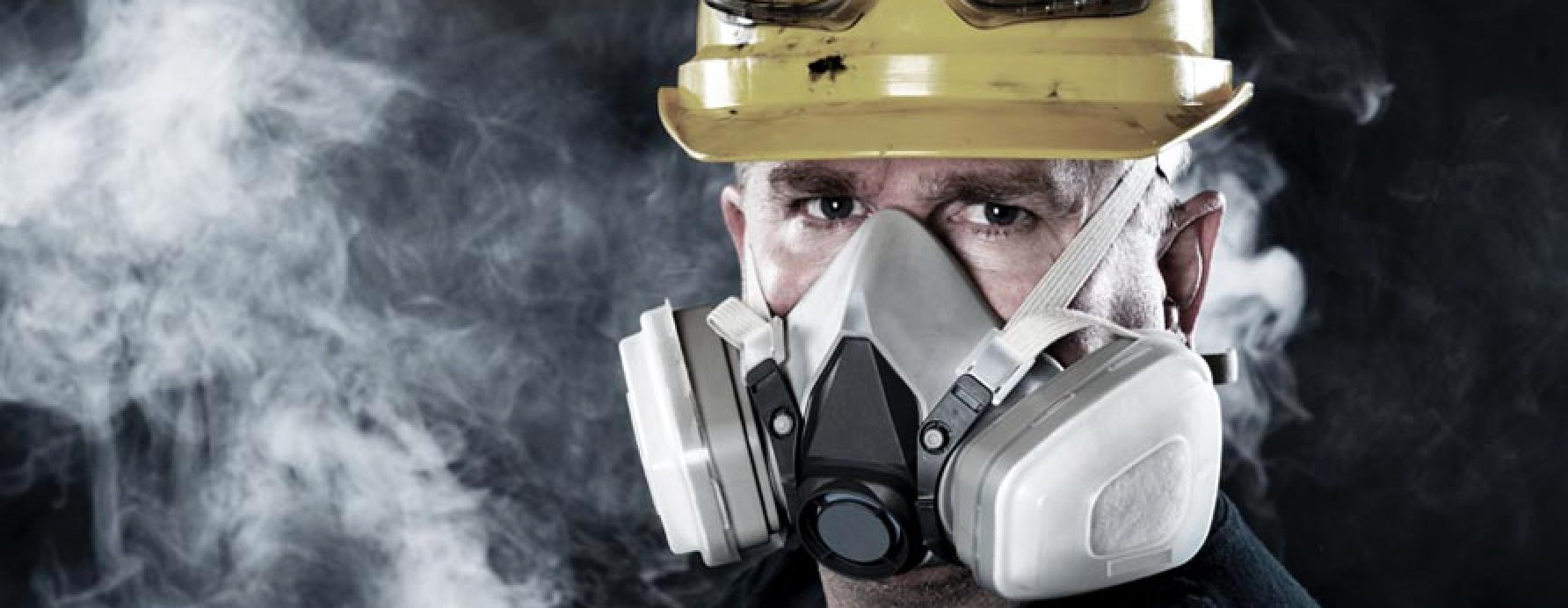Filter by:
2024-04-24

According to the Health and Safety Executive (HSE) more than 1million employees in the UK are exposed to levels of noise that is putting their hearing at risk. With the increasing claims culture in the UK, it is essential than organisations comply with the control of noise regulations.
2024-04-21

This guide is intended for employers and provides detailed insights into the risks associated with rosin (colophony)-based solder flux fumes. The article aims to foster a deeper understanding of the hazards, legal obligations under the Control of Substances Hazardous to Health Regulations 2002 (COSHH), and robust preventive measures to ensure a secure working environment.
2024-04-16

In the ever-evolving healthcare landscape, prioritizing the safety of medical professionals requires a nuanced understanding of the varied applications of medical gases. This expansive article delves into the potential health effects, exposure dynamics, preventative strategies, and the crucial aspect of monitoring exposure levels. Moreover, it explores the diverse contexts where these gases are commonly utilized, ranging from the dynamic environment of hospitals to the more intimate spaces of dental clinics and beyond.
2024-04-16

In our rapidly industrialising world, environmental noise remains a significant concern, particularly in regions where residential areas are in close proximity to industrial zones. Industrial noise can disrupt daily activities, affect health, and decrease quality of life, making effective noise management and regulation critical. This article aims to educate and inform about the pervasive issue of industrial environmental noise and introduce the British Standard BS 4142, which provides a framework for assessing and mitigating its impact.
2024-04-09

In the ever-evolving landscape of the pharmaceutical industry, where scientific breakthroughs shape the course of medical history, the well-being of the workforce is a paramount concern. This blog undertakes an in-depth exploration of the multifaceted challenges that workers face in the pharmaceutical sector, particularly concerning the handling of raw and active chemical ingredients in drug manufacturing and laboratory settings. Moreover, it seeks to unravel the complexities surrounding occupational exposure and elucidate comprehensive measures aimed at mitigating risks and ensuring the safety of those at the forefront of medical innovation.
2024-04-07

In the realm of occupational health, exposure to animal allergens poses a significant concern for individuals working closely with laboratory animals. Laboratory Animal Allergy (LAA) is an allergic hypersensitivity response that may develop due to prolonged exposure to animal allergens.
2024-04-03

Man-Made Mineral Fibres (MMMF) are synthetic fibres created from various inorganic materials, such as rock, slag, glass, or basalt. While these fibres have numerous industrial applications, it's crucial to delve into their properties, potential health effects, common sources, and effective prevention measures to ensure workplace safety.
2024-04-01

Grain dust, a byproduct of the harvesting, drying, handling, storage, and processing of barley, wheat, oats, maize, and rye, poses significant risks to those involved in the agricultural and related industries. In this blog, we'll delve into the different types of grains that generate dust, the health effects associated with exposure, the UK EH40 exposure limit, classification as a sensitiser, industries commonly affected, and crucial control measures to mitigate exposure.
2024-03-31

In the evolving industrial landscape, isocyanates, notably di-isocyanates, play a vital role in polyurethane production, with applications ranging from paints to adhesives. Despite their versatility, it's essential to acknowledge the inherent risks of isocyanates, known for their potential as potent respiratory sensitisers. Workers exposed to these chemicals face risks of breathing disorders, including the notable concern of occupational asthma.
2024-03-30

Within the domain of occupational hygiene, employers face a critical challenge in controlling exposure to hazardous substances. Volatile Organic Compounds (VOCs) constitute a class of chemicals that present a particular risk due to their ability to become airborne as vapours at room temperature. As an employer, it is imperative to comprehend the nature of VOCs, the industries or processes where exposure can occur, the associated health effects, and, most importantly, how to prevent or mitigate exposure effectively.
2024-03-29

Compressed air for breathing apparatus such as air fed masks or air tanks normally originates from a compressor system. These systems themselves can generate and concentrate a wide range of contaminants that can have an impact on the air quality being supplied.
2024-03-27

Flour dust is a daily occurrence in facilities including plant bakeries, craft bakeries, semi-automated craft bakeries, in-store bakeries, pizza and pastry manufacturing facilities and biscuit manufacturing which means that approximately 95,000 people working in the UK baking industry encounter it daily.
2024-03-26

Occupational exposure to rubber dust and fumes presents a significant challenge in industries where rubber processing is a common practice. This blog aims to comprehensively address the nature of rubber fumes and dust, legal obligations for organizations, processes generating these particles, at-risk industries, exposure methods, associated health effects, and effective control measures.
2024-03-20

Carpenters and joiners are four times more likely to get asthma and other lung diseases due to working closely with wood dust on a very regular basis.
Other conditions can also develop particularly from hardwood dust such as Cancer - particularly of the nose which is why it’s very important to be aware of the workplace exposure limits and controls that should be in place to protect your staff and meet regulatory compliance.
2024-03-12

Every year, thousands of workers are made ill from exposure to dust in the workplace that could result in an increase of lung diseases including Occupational Asthma, COPD and even Cancer.
2024-03-12

The legal requirement for monitoring inhalation exposure is given in regulation 10 of the COSHH Regulations.
2024-03-12

Diesel Engine Exhaust Emissions (DEEE's) contain a complex mixture of gases, vapours, liquid aerosols and particulate substances. You may be exposed to diesel fumes if you work where diesel operated heavy vehicles are being used, or where motor vehicles are generating diesel fumes such as when coming into and out of car parks or when passing toll booths. You may also be exposed to diesel fumes if you are working in tunnels or on construction sites where diesel operated stationary power sources are being used.
2024-03-12

In the dynamic landscape of workplace safety, respiratory protection stands as a cornerstone against airborne hazards where at source controls fail to reduce exposure to low enough levels. This blog explores the nuances of respiratory protective equipment (RPE) selection, awareness training, face fit testing, maintenance protocols, and troubleshooting common issues. Drawing insights from the Health and Safety Executive (HSE) document HSG53, we aim to provide a holistic understanding of safeguarding respiratory health by addressing best practices and troubleshooting prevalent challenges.
2024-03-12

The imperative to regularly monitor exposure to hazardous substances, in particular those substances identified as carcinogens and sensitisers, is central to maintaining a healthy and safe working environment. Under the Control of Substances Hazardous to Health (COSHH) regulations, particularly Regulation 10, regular monitoring and periodic reassessments are not just regulatory requirements but fundamental components of workplace safety in the UK. These practices are crucial for ensuring that control measures are adequate, demonstrating compliance with Workplace Exposure Limits (WELs), and fostering a proactive safety culture.
2024-03-01

Whole-body vibration (WBV) is a serious consideration for many people who work with heavy machinery and is usually transmitted through the seat or feet of particular vehicles or machinery. If you are an employer or an employee who uses heavy machinery, it is something you should be aware of so that you can take adequate steps to avoid issues in the future.
In this blog, we’ll explain what whole-body vibration is and the risk assessments you or your workplace should be doing.
2024-03-01

In the complex world of industrial processes and manufacturing, the use of chemicals and solvents is everywhere. While these substances play an important role in various industries, they also pose potential risks to human health and the environment. This is where the expertise of chemical and solvent exposure experts becomes important.
In this blog post, we will look into the responsibilities, skills and significance of these professionals who specialise in lessening the adverse effects of chemicals and aim to reduce occupational exposure.
2024-03-01

In the hustle and bustle of daily life, it's easy to overlook what we can't see – the air we breathe. Invisible threats may lurk in the spaces we consider safe. When we spend so much of our time in the workplace, it’s vital that the air we breathe is healthy for us. This blog aims to shed light on the pressing need for air quality testing, discussing the unseen pollutants that can impact our health and well-being.
Here’s what you need to know:
2024-03-01

As a business owner, ensuring the safety and well-being of your employees is paramount. Exposure testing plays a crucial role in assessing and managing potential risks within your workplace. In this blog, we will delve into the essential aspects of exposure testing, shedding light on why it's important, how it's conducted and the benefits it brings to your business.
2024-03-01

The hazards of prolonged exposure to loud noise may not be as well publicised as many other workplace dangers, but this doesn’t mean such exposure is any less harmful. With many injuries and long-term issues stemming from such exposure, it’s well within the interests of factory and building site employers to find a satisfactory compromise, avoiding financial implications and employee discontent. Within this blog post, let Euro Environmental Ltd take you through the absolute basics of this prominent issue, as well as the methods we employ to test for excessive noise, and consequently help employers address it.
2024-03-01

Employee welfare is a huge factor within any organisation, contributing to the everyday function of construction sites, offices and nearly any other working environment you might think of. A happy and thriving workplace is only possible when employees feel valued, safe and secure, therefore investing in the means to achieve this should be at the forefront of an employer’s mind. At Euro Environmental Ltd, we specialise in protecting employees with such measures as workplace exposure and noise testing, so let us take you through some of the other ways to prioritise employee safety.
2024-03-01

Employee welfare is a huge consideration within any workplace, and as some environments naturally produce more hazards than others, staying on top of these dangers is extremely important. Though it may not be one of the first issues that comes to mind, mould has the potential to cause all manner of problems, from general irritation to infections and specific diseases - certainly worth addressing. Within this blog, Euro Environmental Ltd will take you through the specifics of testing for this intrusive growth.
2024-03-01

In any kind of company, noise and vibration in the workplace can be a persistent problem. From colleague chatter to the tip-tap of typing, noise exposure can be a prevalent issue. Not to mention construction and labour based industries!
This is where noise surveys come in. Our blog explores everything you need to know about noise and vibration in the workplace, as well as where you can find reliable and quality workplace noise exposure testing. To learn more about noise exposure and what you can do about it, keep on reading!
2024-03-01

When it comes to safety and responsibility in the workplace, many people will often think about air quality and exposure to dust, mould or fumes. These are often the most common aspects that are looked at within a workplace to ensure a healthy environment for employees, however there is something else that is often overlooked: noise.
Whilst it may not be a forethought for many employers, consistent loud noises and strong vibrations can actually have a lasting effect on employees, which in turn can also affect your business. We’ll discuss what this includes, along with the most effective way to address such an issue and why this is beneficial.
2024-02-07

Respiratory Protective Equipment (RPE) is essential for safeguarding workers from hazardous substances. The effectiveness of RPE, however, hinges on a proper fit to the wearer’s face. The UK's Health and Safety Executive (HSE) alongside the Fit2Fit Accreditation Scheme emphasises the importance of face fit testing to ensure RPE provides the intended level of protection.
2024-02-04

Local Exhaust Ventilation (LEV) systems are crucial in industries where airborne contaminants pose a risk to worker health. These systems, designed to capture and remove hazardous substances before they can be inhaled, require meticulous attention to ensure they function correctly. This guide not only underscores the importance of LEV system inspections as per the UK's HSG258 guidelines but also provides a closer look at maintaining these systems for optimal performance.
2024-01-18

Ensuring a secure and controlled laboratory environment is paramount when handling hazardous substances. This blog provides a detailed exploration of the integrated significance of regular 14-month testing and compliance with UK Health and Safety Executive (HSE) regulations outlined in documents HSG258 and BS EN 14175 for laboratory fume cupboards.
2024-01-18

Ensuring the safety of laboratory personnel working with hazardous substances is paramount. One key aspect of this safety assurance is the implementation of Tracer Gas Containment Tests, which simulate real-life scenarios to evaluate a fume hood's ability to provide protection and contain chemical vapours. In this blog, we delve into the importance of these tests and their role in maintaining a secure laboratory environment.
2024-01-10

In the realm of sustainable building design and construction, the Leadership in Energy and Environmental Design (LEED) certification stands as a hallmark of excellence. One crucial aspect of achieving LEED certification is ensuring indoor air quality (IAQ) meets the stringent standards set by the United States Green Building Council (USGBC). In this article, we will delve into the significance of LEED indoor air quality and explore the testing processes essential for compliance.
2024-01-10

In the ever-evolving landscape of sustainable building design, achieving BREEAM 2018 standards is a testament to environmental commitment. This article provides a thorough exploration of Pre-Occupation Indoor Air Quality (IAQ) testing within the BREEAM 2018 framework, with a specific focus on Volatile Organic Compounds (VOCs) and formaldehyde. By delving into the substances and understanding the rigorous pre-occupation testing processes, we aim to shed light on how BREEAM 2018 certification contributes to creating healthier indoor environments.
2024-01-05

Employees are the crux of any company. From damp smells to rising concerns about indoor air quality affecting health, the impact of these factors can truly take you and your employee’s breaths away. To ensure your business and workers' success, limiting the adverse effects of air pollution should be a staple in modern business.
In this article, we go over three crucial reasons you should improve indoor air quality.
2024-01-05

Here in the UK, 1 in 5 workplaces have a mould problem. Mould can be seriously harmful, especially when it’s found in your workplace, which is why mould and workplace exposure testing are so important. Our blog dives into everything you need to know about mould in the workplace, to find out more, keep on reading.
2024-01-05

Indoor air quality is important for both homes and businesses. Poor air quality can affect the health of people who operate inside the building and can lead to lower productivity and more sick days. If you are considering contacting an air quality specialist for air quality monitoring, you may be wondering how it works and how they can determine air quality.
Keep reading to learn how air quality investigations work.
2024-01-05

Your workplace indoor air quality is more important than you may realise. If you haven’t had an air quality assessment, your employees could be at risk. Our blog dives into the importance of air quality testing for businesses and why it matters. To find out more, keep on reading.
2024-01-01

Prolonged noise exposure in the workplace could have serious health implications on your ears, but did you know exposure to loud or persistent noises can also have an affect on your overall mental and physical health too?
2023-12-14
.png)
Lead-based paints, commonly found in ageing structures, introduce significant risks during removal due to potential lead dust release. A thorough understanding of the technical aspects of this process is essential for implementing effective safety measures. In this article, we delve into key technical elements related to lead dust exposure, focusing on advanced engineering controls, containment systems, decontamination procedures for operatives, and insights into the selection of Respiratory Protective Equipment (RPE).
2023-11-22

No matter what industry you’re in, keeping your workplace safe and secure for employees and business owners is extremely important. Health and safety risk management is crucial for businesses to ensure that they are not violating any laws or regulations, as well as keeping employees and visitors safe on site.
Our blog dives into everything you need to know about risk management, including the steps you can take to manage risks on your worksite. To find out more about health and safety risk management, keep on reading!
2023-11-22

However hard you try to put various measures in place, employees can still be at risk of uncontrollable circumstances and random occurrences. The trick however, is to prepare for any eventuality. Covering all bases, this blog post will take a look at 5 of the most prominent yet surprising workplace hazards and risks, from the commonplace, to the rare but no less significant. Regardless of whether you’re based in a crowded office, busy industrial warehouse or retail setting, there’s something to learn for everyone within this handy guide. Allow the Euro Environmental team to detail the importance of air quality testing, noise exposure and much, much more, so you can curate that ideal workplace environment in 2024.
2023-11-22

As crucial as ever, the welfare of your employees, clients and customers certainly can’t be understated. Important in terms of your legal responsibility as an employer or manager, all who operate below you should feel safe in the knowledge that their working space is free of hazards and risks, though this can be tough to manage if you operate within a particular sector. Particularly pressing for those coming into contact with chemicals, sharp objects and hazardous materials, this isn’t to say those in traditionally ‘safe’ jobs are free from harm. Read ahead and let the Euro Environmental team guide you through some of the top ways we ensure employees are always in safe hands.
2023-11-22

When you think of hazards within the modern workplace, noise may be low on your agenda, but rest assured that the statistics are alarming – and putting protection in place is an absolute essential within some particular working spaces. Workplace noise surveys are a fantastic way to measure the risks within your workplace, and allow you to plan measures and reduce risk simultaneously. Working within an industrial or construction context and looking to ensure the welfare of those you collaborate with? Allow Euro Environmental to take you through the proven perks and benefits of carrying out specialist noise assessment.
2023-11-22

Regardless of your workplace, daily activities and perceived risk to staff, health hazard assessments are a fantastic idea within a number of contexts. Often the favourable option if you’re an employer, owner or senior stakeholder looking to uncover hidden risks and issues, such assessments can safeguard your workforce, keeping you legally compliant and able to resume regular business.
In addition, these accurate assessments are a great way to establish what your workplace needs, and at Euro Environmental Ltd, our team can helpfully guide you through the ways in which additions to your space can create a setting with significantly less risk.
From the potentially harmful nature of loud noises and disruptions, to the potential absence of fire safety equipment and installations, let us take you through the intricate details of an occupational health hazard assessment.
2023-11-22

A well-lit work environment not only enhances productivity but also plays a pivotal role in ensuring the safety and well-being of employees
2023-11-22

When a fire ravages a building, the immediate concerns are often focused on extinguishing the flames and ensuring the safety of occupants. However, the aftermath of a fire brings about a new set of challenges, particularly concerning indoor air quality (IAQ)
2023-11-22

As we spend a significant portion of our lives indoors, the importance of creating a comfortable and inviting indoor environment cannot be overstated. One of the key factors contributing to our well-being in indoor spaces is thermal comfort.
2023-10-01

In the complex realm of pharmaceutical manufacturing, where the stakes are high in terms of safety and quality, ensuring the robust containment of particles during the production of active pharmaceutical ingredients (APIs) is a paramount concern.
2023-09-25

You may think that Construction as an industry is generally dangerous, and you’d be right, especially if those involved in projects are not suitably trained, don’t have the right personal protective equipment, and are not fully aware of relevant exposure risks.
2023-09-17

When working in and around the construction, manufacturing, engineering and other noisy industries, or for businesses based in a factory or warehouse it is very common for workers to experience Tinnitus and assume it is a direct result of exposure to excessive noise.
Tinnitus is the term given to the sensation of hearing a sound in the absence of any external noise.
2023-07-01

The law says employers must make sure there’s an adequate supply of fresh air in the workplace. There are two ways of maximising the level of fresh air in a workspace, either by natural and / or mechanical ventilation. Ventilation control measures play an essential role in improving air quality and staff well being.
2023-04-01

Health surveillance of employees likely to be exposed to health hazards in the workplace is an ongoing requirement of regulation 11 of the Control of Substances Hazardous to Health (COSHH) 2002.
This artical will assist you in making an informed decision when appointing and selecting your Occupational Health (OH) Provider.
2022-01-20

Inhaling silica dust can lead to serious, sometimes fatal illnesses. Silica in its crystalline form has recently been classed as a respiratory carcinogen as it causes occupational cancer.
2021-11-16

The Control of Vibration at Work Regulations require employers to control the risk from whole body vibration. The most common side effects of this type of exposure are back pain.
2021-10-20

HSE’s inspectors across the UK will be targeting 1000 construction sites to check that their health standards are up to scratch. Inspections will focus on respiratory risks and occupational lung disease, looking at the control measures businesses have in place to protect their workers’ lungs from construction dust including silica, asbestos and wood dust.
2021-10-01

As part of our workplace exposure testing and assessment service for clients, we often come across a frequent misunderstanding of what substances are sensitisers and the role that they play in Occupational Asthma.
If your business involves manufacturing, fabrication, welding or is based in a factory or warehouse, its very important you understand what Occupational Asthma is and how it is caused. It is now officially the most common work-related lung disease in the UK.
2021-10-01

The Health and Safety Executive's document EH40/2005 Workplace Exposure Limits (4th edition) identifies all known carcinogens and also details the legal exposure limits of over 500 common substances that are hazardous to health under the COSHH regulations.
Over recent years the workplace exposure limits (WEL’s) have been reduced for 11 existing carcinogens and 2 new substances have been classified as carcinogens.
2021-06-09

The Control of Vibration at Work Regulations 2005 were introduced to protect workers from vibration at work and were recently updated in July 2019. Hand Arm Vibration Syndrome (HAVS) caused by exposure to vibration at work is preventable, but once the damage is done it is permanent.
2021-05-24

Mold is a type of fungus. It is present almost everywhere, including the air. There are up to 100 common indoor mould types that have the potential for creating health problems such as Aspergillus and Penicillium species.
The most toxic moulds are those that are capable of producing chemicals called mycotoxins. Mycotoxins are small molecular weight toxic molecules produced by some species of mould such as Stachybotrys (black mould), they are particularly important because they are known to be highly toxic.
2021-05-01

With up to 80,000 known Welders in the UK, including those that use welding techniques as part of their positions, a big proportion of the population come face to face with potential harmful fumes and gases every single day. The fume given off by welding processes is a varying mixture of airborne gases and very fine metal particles.
2021-05-01

Indoor air quality has been identified as one of the top five most urgent environmental risks to public health, and as a responsible employer – you need to ensure your employees are safe and healthy whilst in the working environment.
2021-04-28

Does your business or occupation involve using machines that require metalworking fluids or oil mist – do you know the potential risks to your employee’s health if they are exposed to them on a frequent basis?
2020-12-24

Pre-symptomatic and early symptomatic cases (up to five days prior to symptom onset) are the most likely to account for a significant proportion of transmission of COVID-19. Emerging research suggests that people may actually be most likely to spread the virus to others during the 48 hours before they start to experience symptoms.
2020-12-10

What is Surveillance Testing?
COVID-19 surveillance testing detects and monitors for the occurrence of infection at the population level. By testing groups instead of individuals, you can efficiently monitor populations, ranging from small companies to university campuses. Results from surveillance testing can serve as an early warning of infection and inform targeted interventions that slow the spread.
2020-07-27

Although the World Health Organisation (WHO) initially held that the coronavirus could not be spread through aerosols, it recently reversed its stance. The WHO guidelines now state that airborne transmission of the coronavirus may be possible indoors, especially for people who spend extended periods in crowded, poorly ventilated rooms.
This may also be a good time to think about improving air quality in buildings by significantly changing heating, ventilation, and air-conditioning (HVAC) systems or by making physical changes to manage indoor airflows.
2020-05-19

Given the World Health Organisation has now confirmed that COVID-19 survives under certain indoor air conditions for up to 3 hours and its head scientist of disease has urged hospitals to better manage their air quality for staff when treating patients, there is a serious need for the public to understand the impact that air quality and in particular humidification levels can have on the spread of a virus.
2020-04-01

Hearing protection is vitally important to those working in noisy environments daily.
BUT, if the protection provided by the hearing protection is too high, communication can become difficult and individuals can end up working in isolation or have difficulty hearing warning alarms or approaching vehicles.
2019-03-01

There is new scientific evidence from the International Agency for Research on Cancer that exposure to mild steel welding fume can cause lung cancer and possibly kidney cancer in humans. The Workplace Health Expert Committee has endorsed the reclassification of mild steel welding fume as a human carcinogen.
2018-12-06

Mould is something you would most commonly associate with the home, maybe even to one room – the bathroom; as it often has moisture in the air.
2018-06-05

According to the Health and Safety Executive (HSE) more than 1million employees in the UK are exposed to levels of noise that is putting their hearing at risk. With the increasing claims culture in the UK, it is essential than organisations comply with the control of noise regulations. Here are five steps that businesses can take to ASSESS and CONTROL excessive noise levels.
Contact Us
Please fill in the short form below for any enquiries.
Search
Please fill in the short form below for any enquiries.